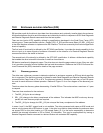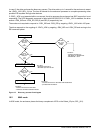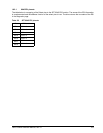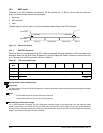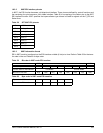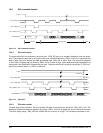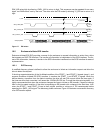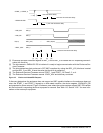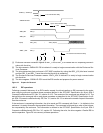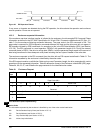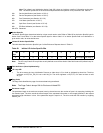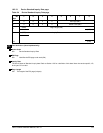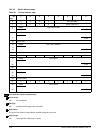
Fibre Channel Interface Manual, Rev. D 107
DSK_WR going high by allowing –ENCL_ACK to return to high. This sequence may be repeated for as many
bytes, two nibble each, sent by the host. The drive exits the ESI mode by allowing –P_ESI low to return to a
high.
Figure 17. ESI writes
10.5 Enclosure-initiated ESI transfer
Enclosure-initiated ESI (EIE) provides a means for the enclosure to request information or action from a drive
that supports an 8067 ESI interface. The transfer of information is independent of the SCSI interface. The for-
mat of the information, however, is similar to the SES information transferred on the SCSI interface for ease of
implementation.
10.5.1 EIE Discovery
A modified discovery phase is defined to allow the enclosure to initiate an information request and allow the
drive to detect the request.
If the drive supports detection of the Un-Mated condition of the START_1 and START_2 signals (case 1), and
supports Enclosure Initiated ESI (EIE) transfers, it monitors the START_1 and START_2 signals. When the
device detects a transition from one state to another, the drive will wait 100 ms and check the lines again. If
the lines are still at their new state, it will assert the –PARALLEL ESI line. To avoid the drive spinning down, it is
highly recommended that when the enclosure changes the lines to initiate an ESI transfer, it does not change
them to the Un-mated condition. If the drive is requesting an ESI transfer with a change in the Start lines, it will
return the START_1 and START_2 lines to their original condition a minimum of 100 nanoseconds before
asserting the –ENCL_ACK signal. The discovery phase continues. Figure 18 illustrates a successful discovery
of an EIE transfer request.
-P_ESI
SEL_6/-DSK_WR SEL_6
SEL_4/-ENCL_ACK
SEL(3:0)/DATA SEL(3:0)
Data
Nibble 1
Data
Nibble 2
Data
Nibble N
SEL_5/-DSK_RD SEL_5
SEL_4
1 µsec max





